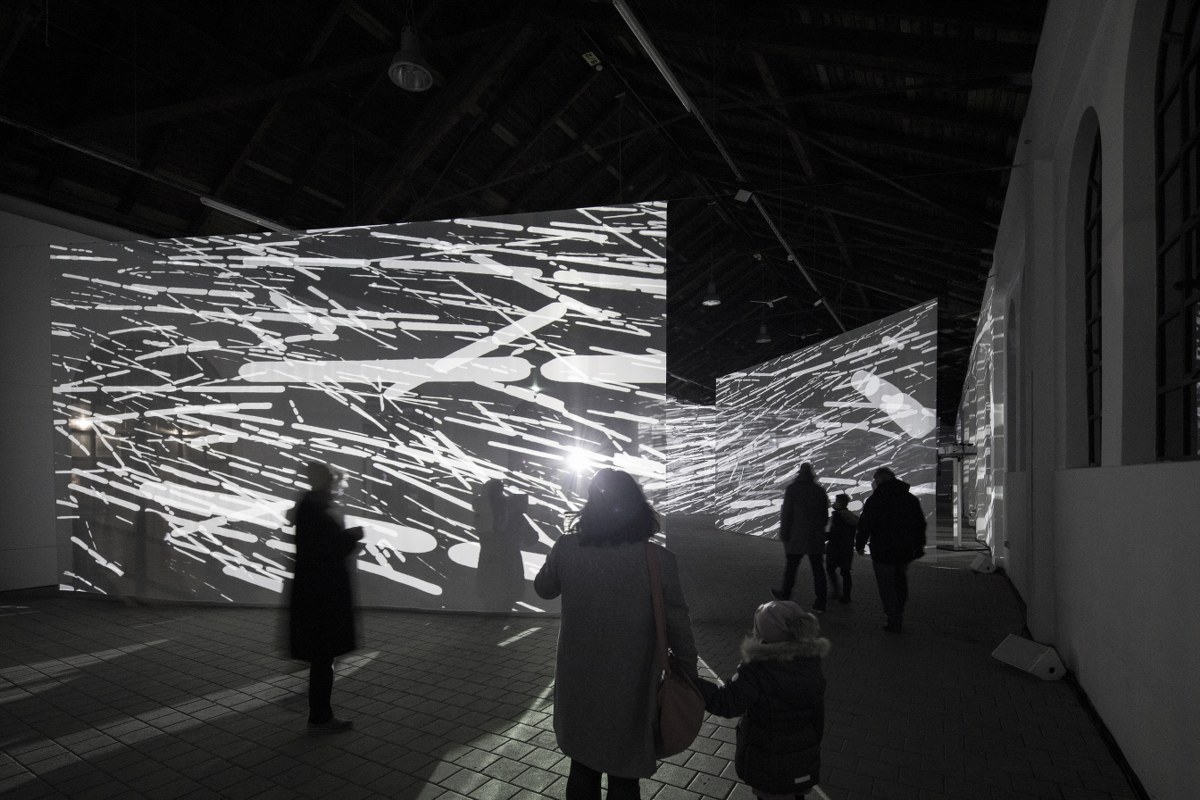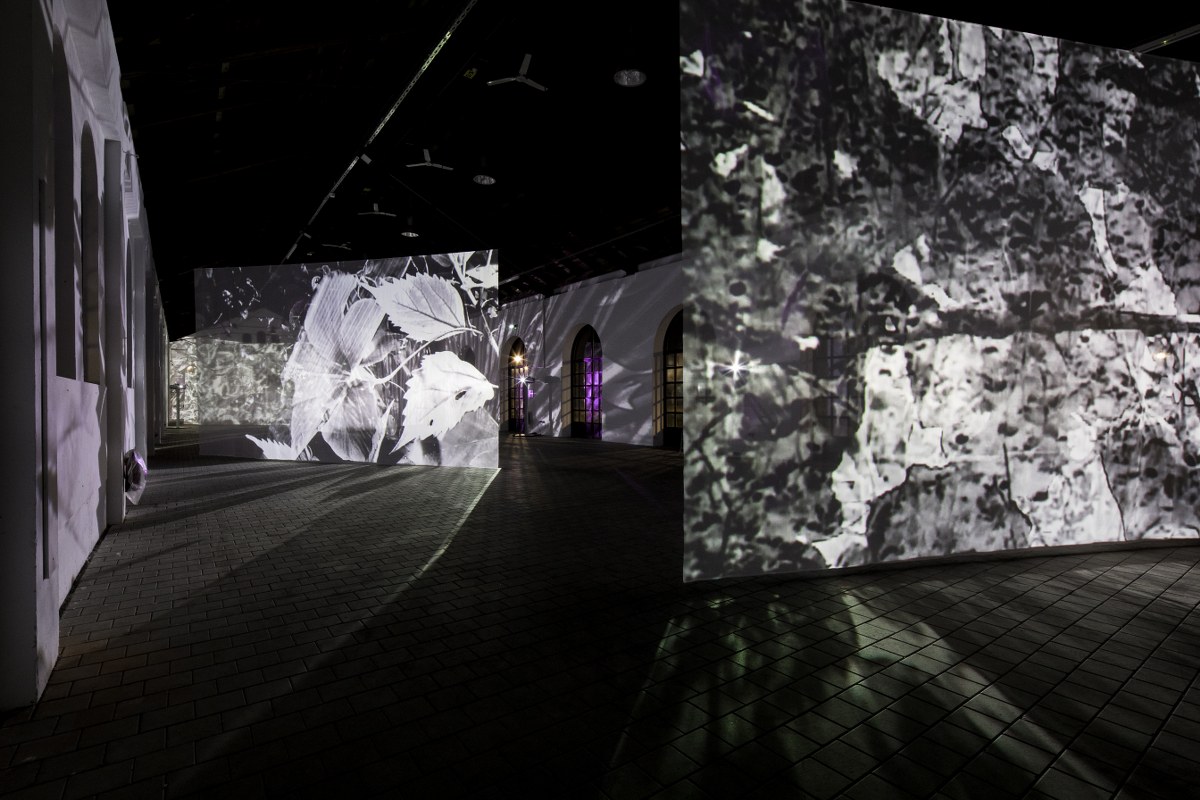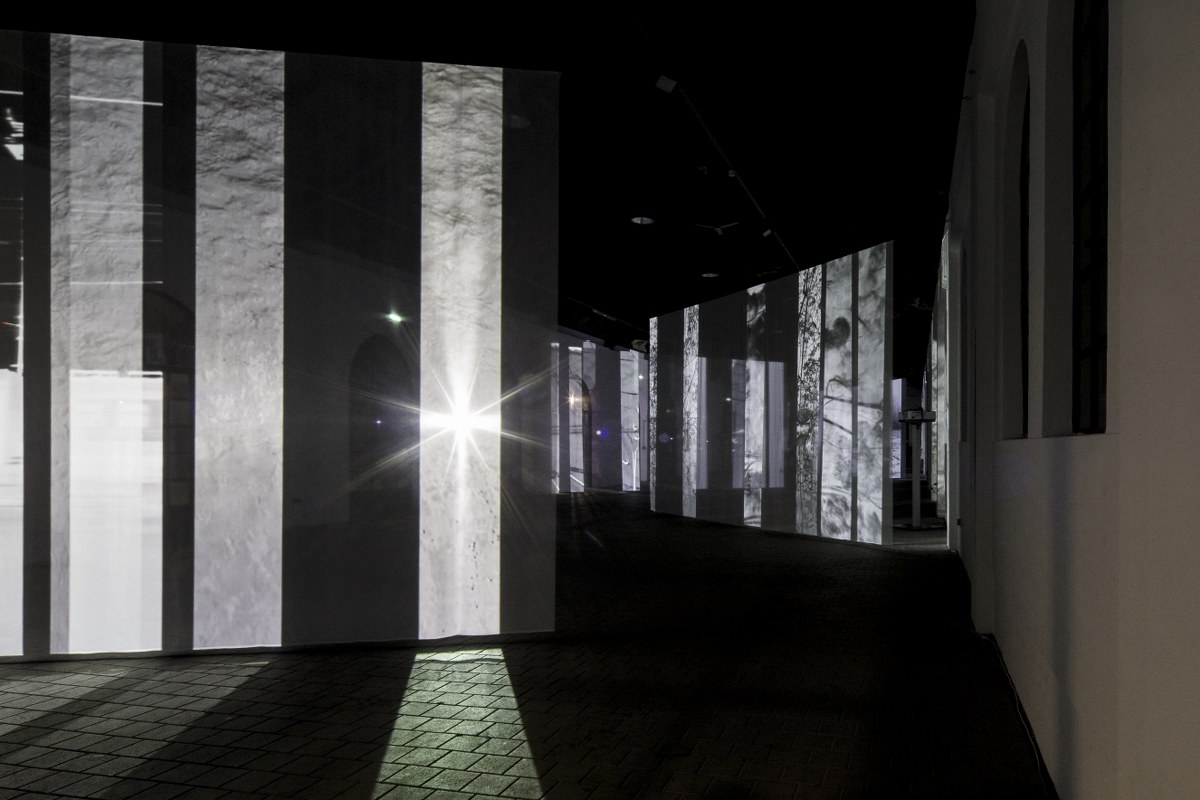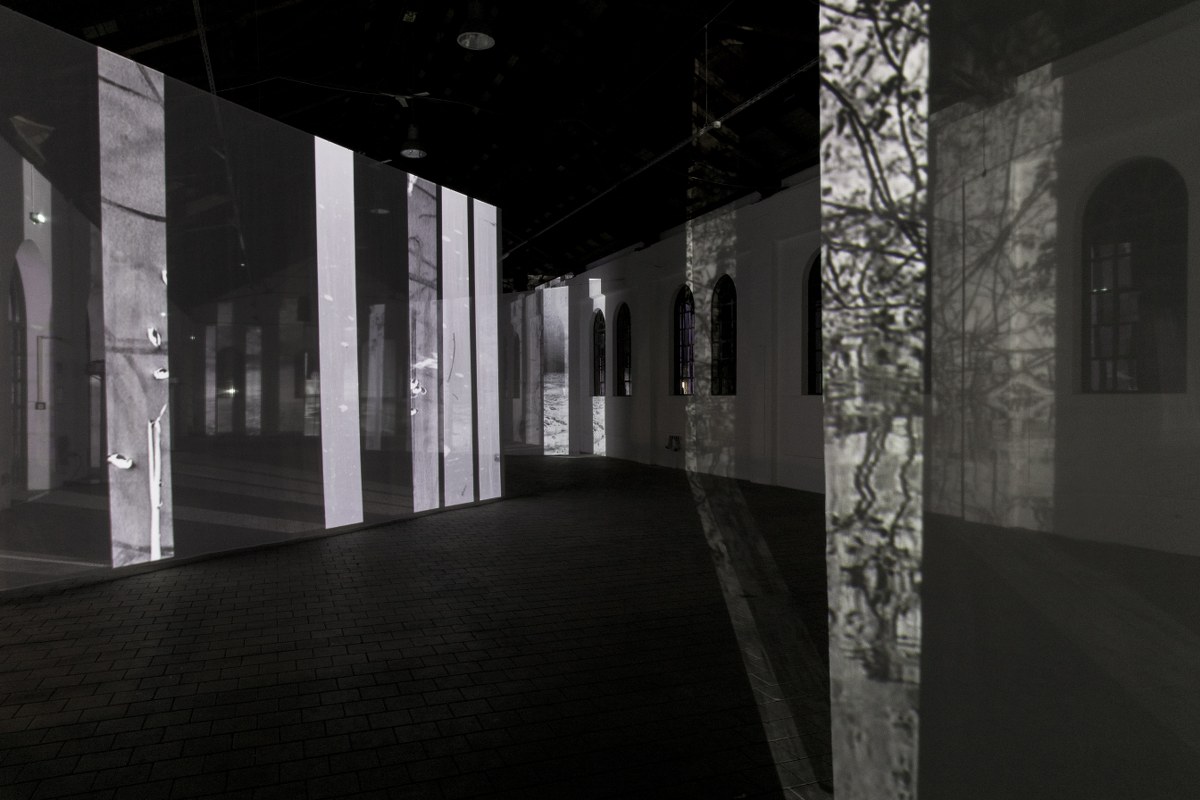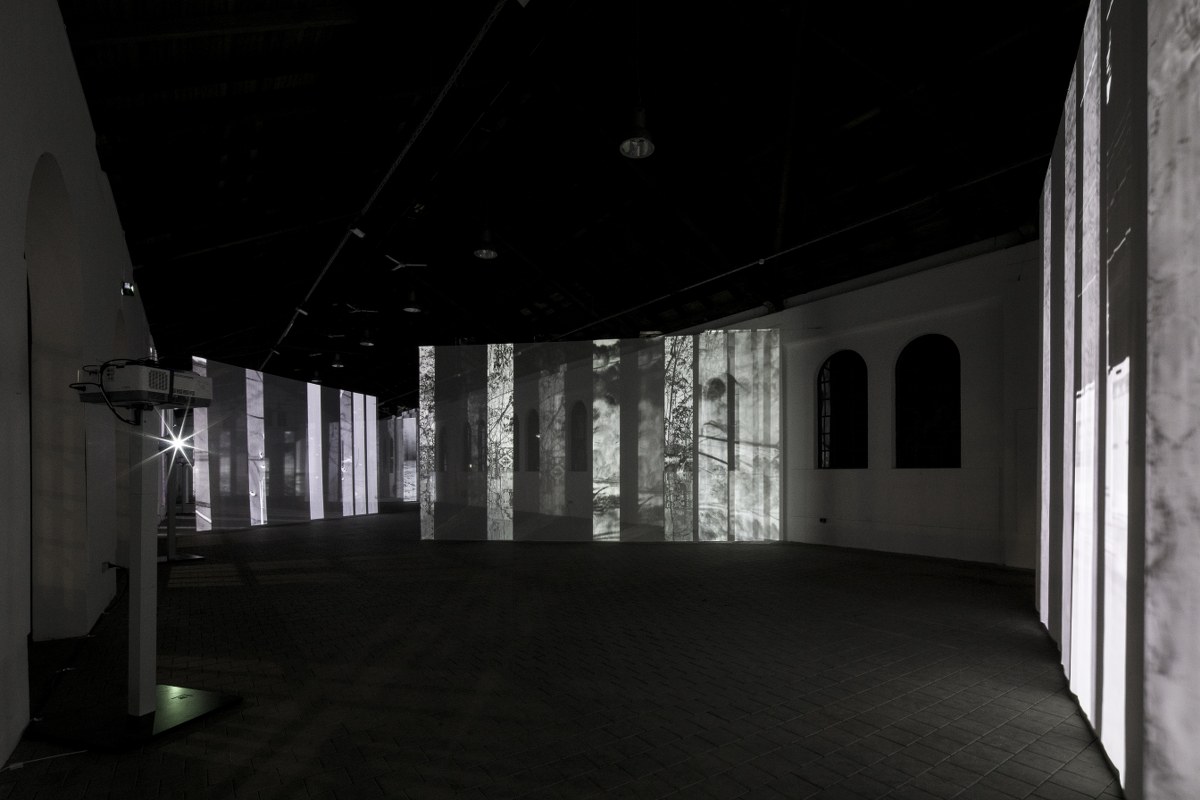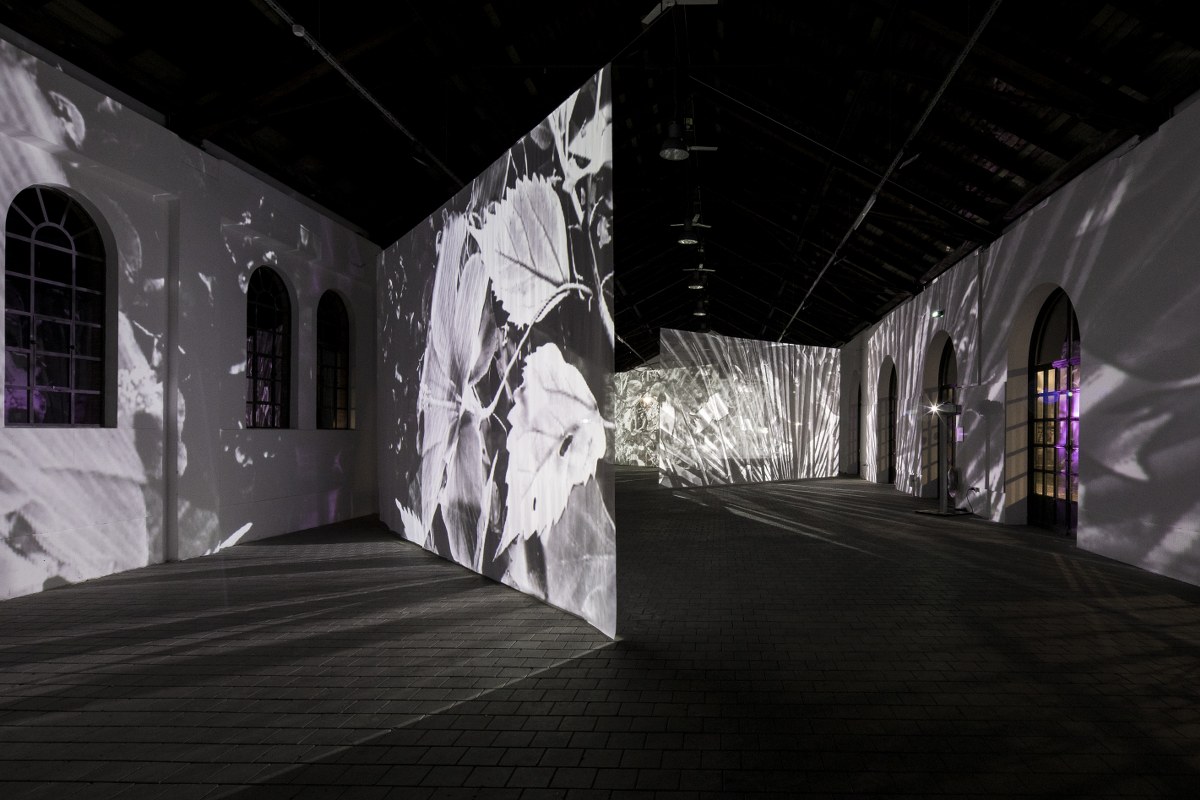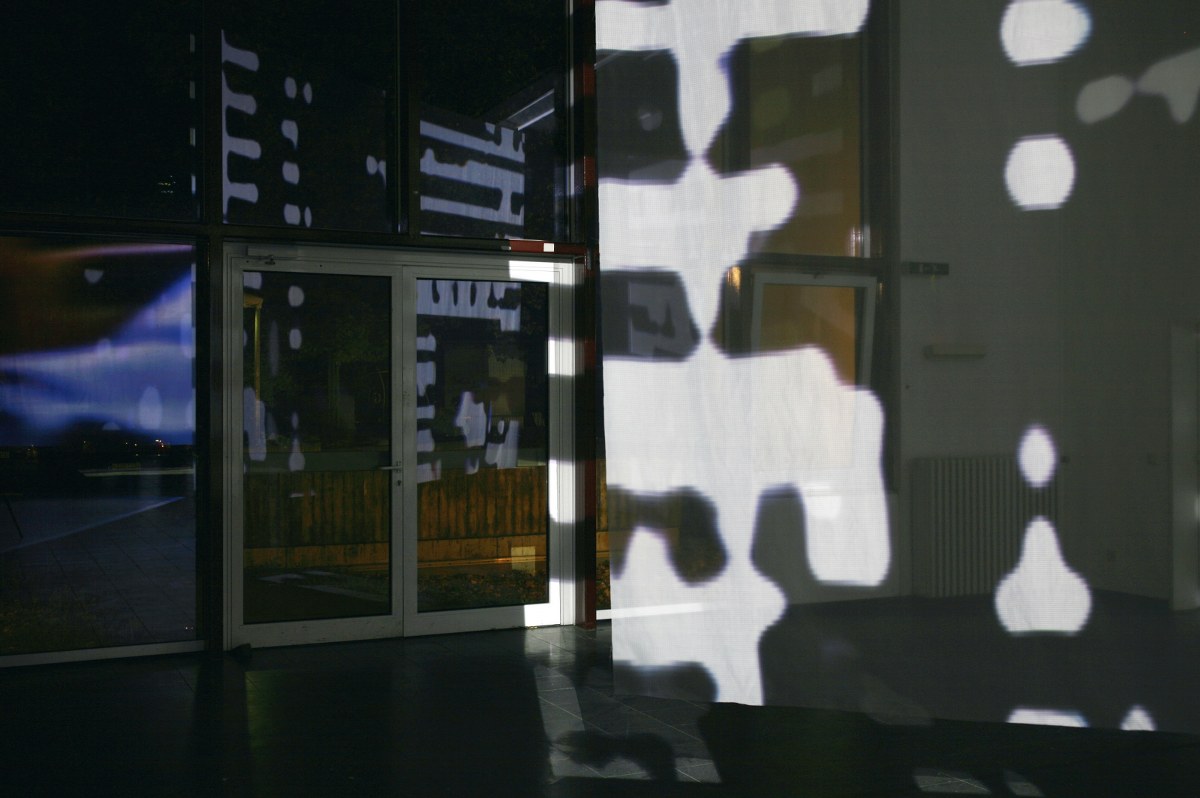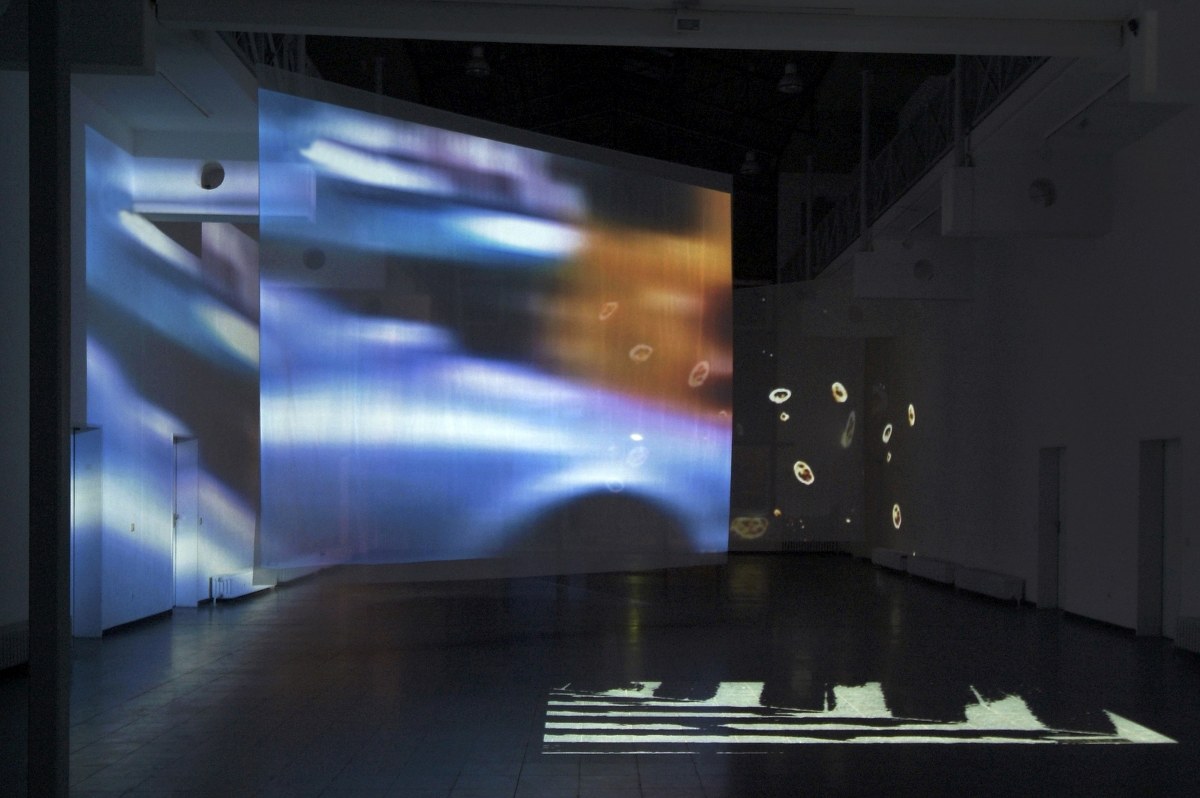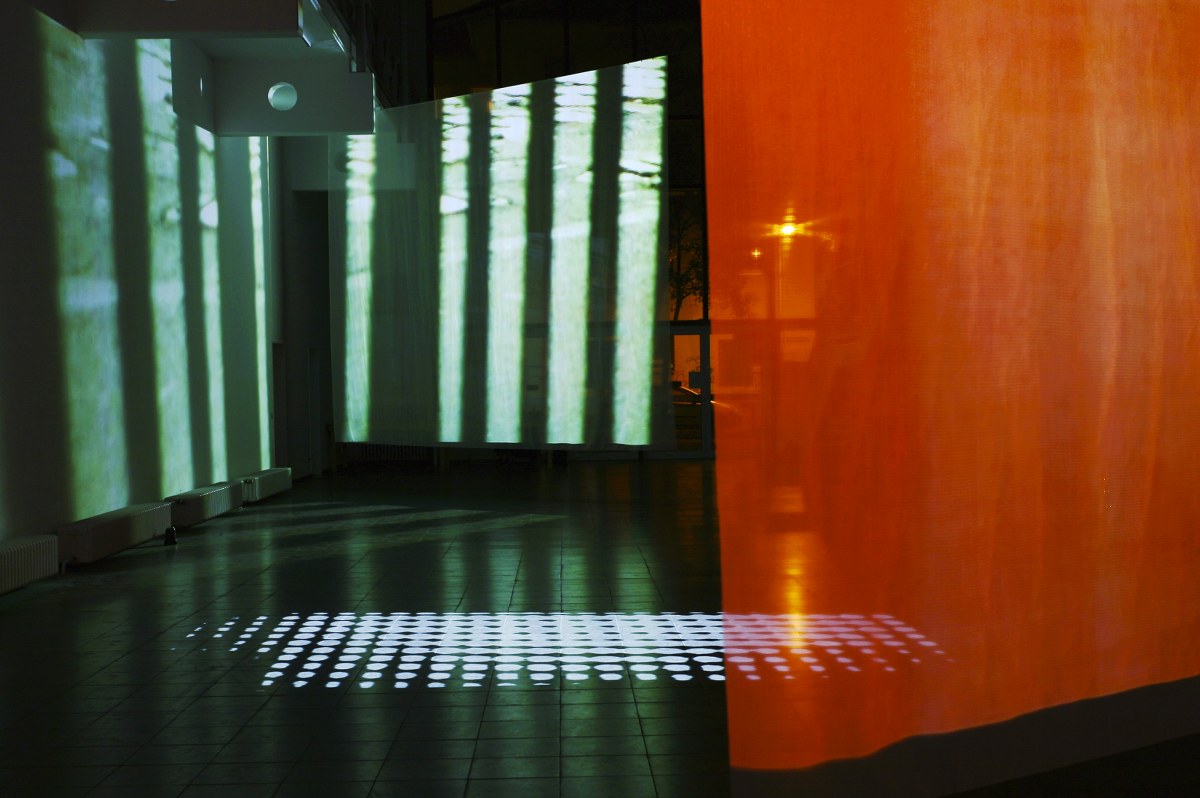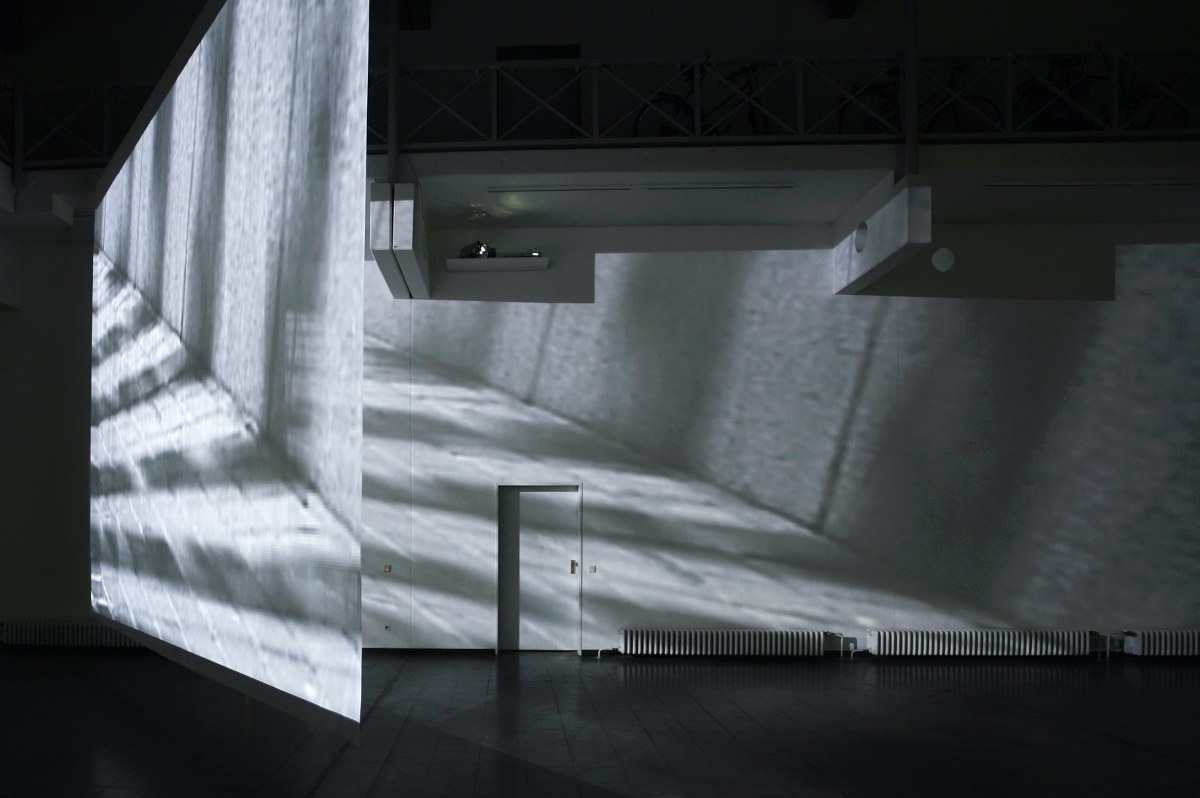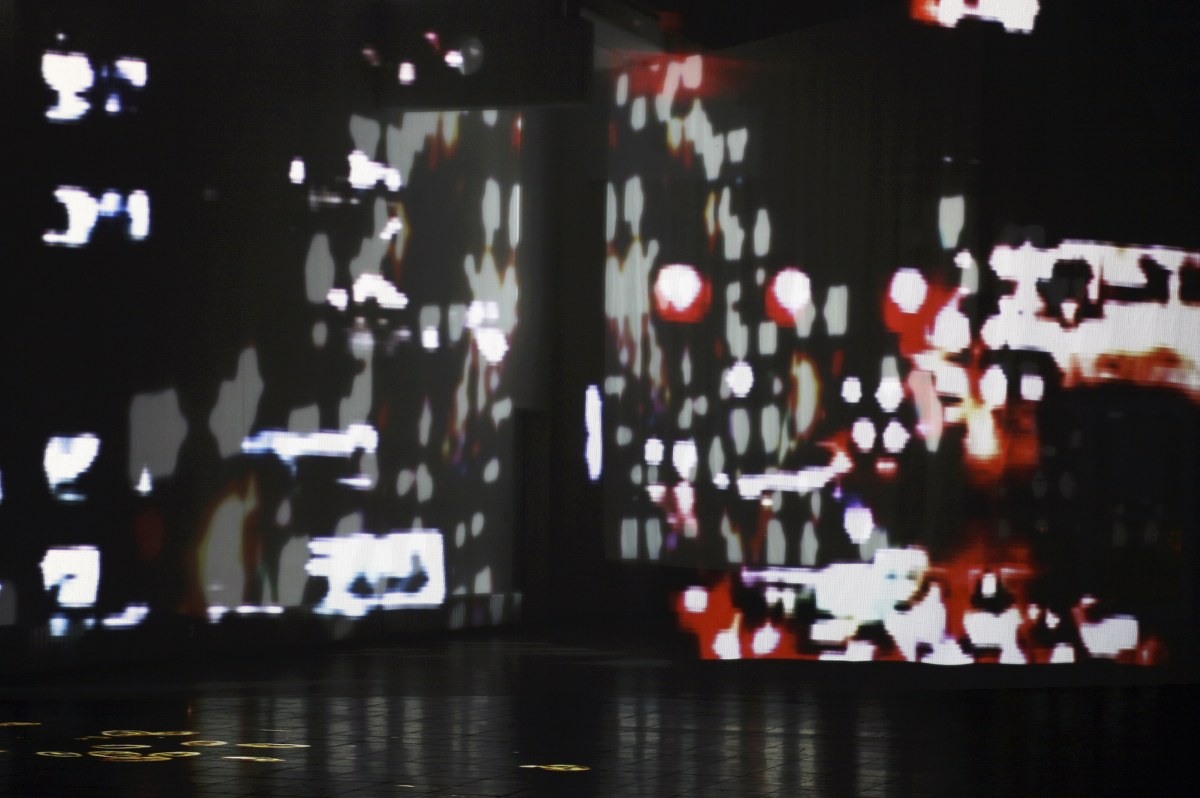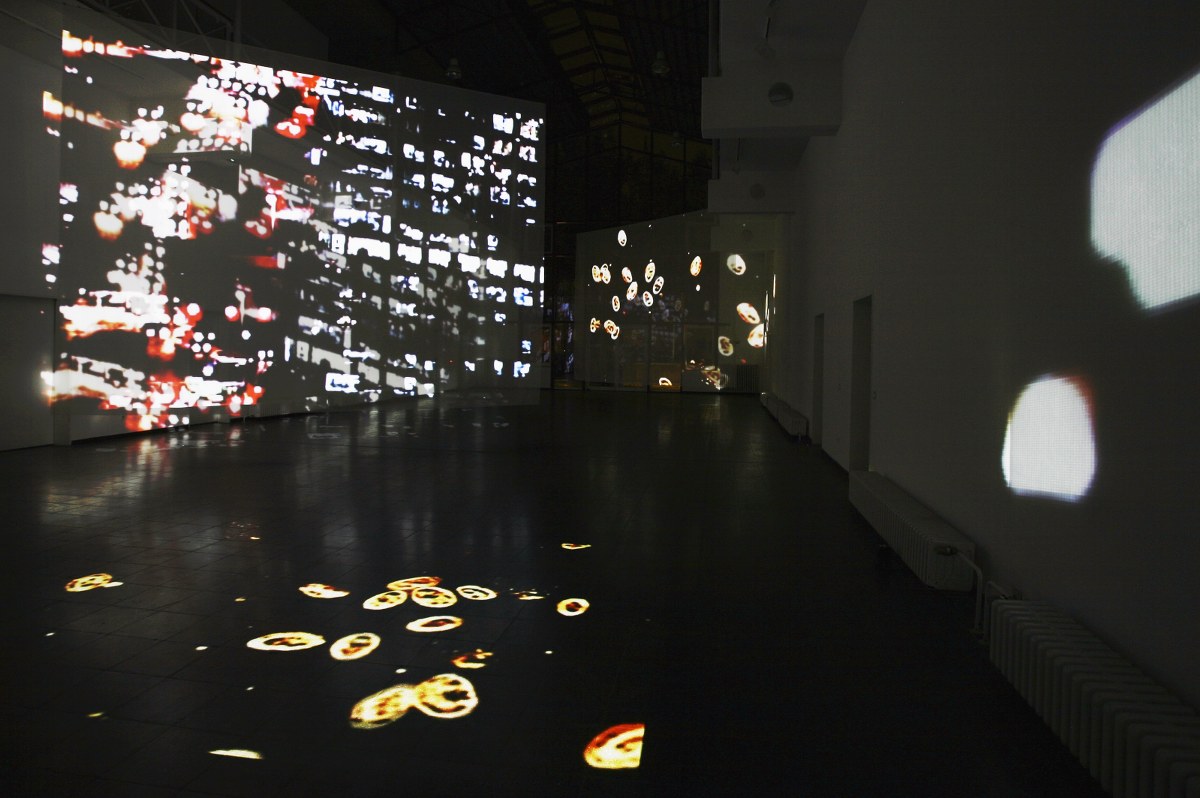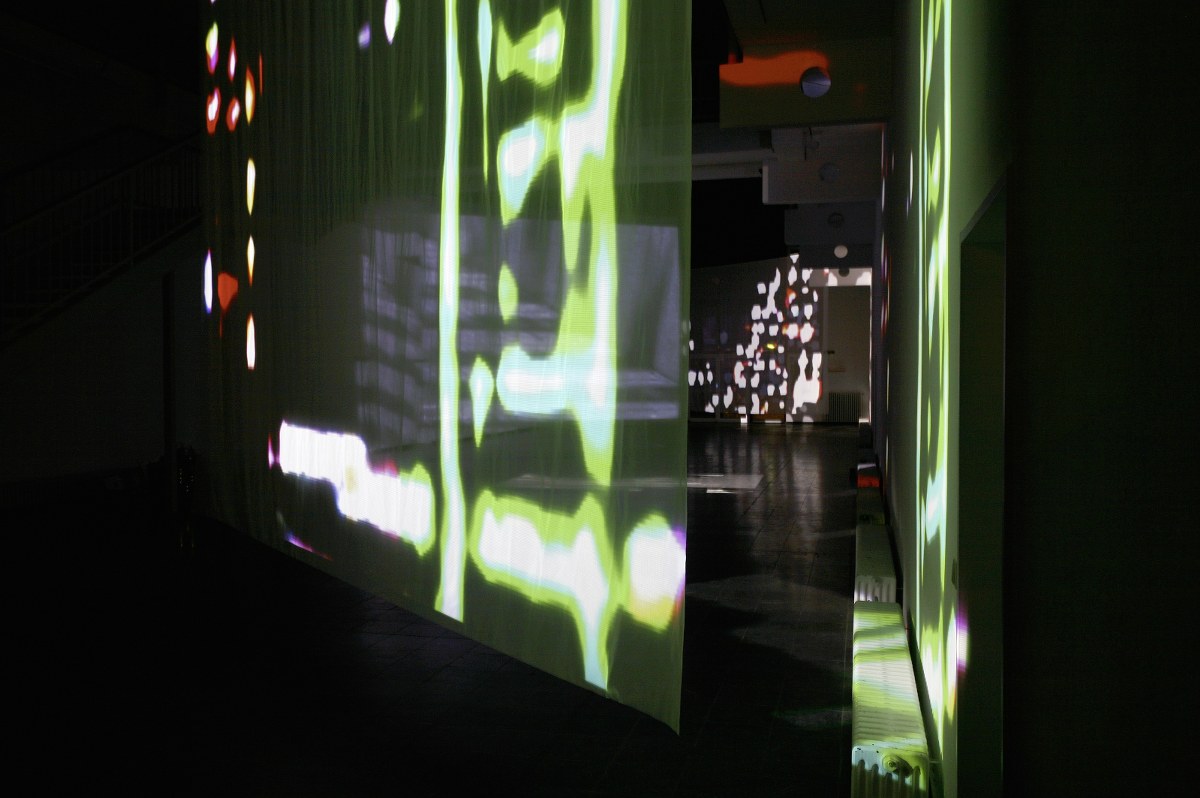On the extensive artistic archive of Gudrun Barenbrock
Written by Bettina Pelz. Published on 21 November 2021.
“An extensive archive is like a well-filled refrigerator: there’s always something in it that you feel like”, said Gudrun Barenbrock during the interview preparing this text. Since the 1990s, she archives still and moving images featuring micro-and macro perspectives regarding modules, structures, complex systems, and interfering dynamics. In her artistic practice, she manipulates and animates photographs and videos, collages, and composes visual systems. Projected into selected spatial situations, the artist creates situations that are an invitation to experiencing imageries as an always open source. Gudrun Barenbrock has been developing spatial video art installations for 15 years. Her visuals originate from the extensive archive of the artist. The guiding idea of filling her archive is not to prevent forgetfulness and stopping the disappearance of things but to provide herself with material for non-linear artistic research and production.
“Having my own archive means independence. I don’t have to ask anyone and can do what I want with the material up to and including destroying it.” For the last fifteen years, Gudrun Barenbrock has been developing spatial interventions based on multi-channel projections. Her visuals originate from an extensive personal archive providing her with material for non-linear artistic research and production. She is collecting in the early 1990s: “I had started with that during my last year at the art academy. I still have a huge pool of photos which I still work with today. For my last exhibition project in 2021, I used a total of about 3000 photos from those days to today.”
“I collect almost everything. Everyday things, banal things, special things – it doesn’t matter. I can never have enough.” With her camera, she observes natural or urban landscapes, organic as well as industrial structures, macro-and micro contexts. “Often, I just take my camera with me, without any particular in mind, it is small, it fits in my jackets’ pockets. I find a certain casualness important, sometimes I come across something that interests me, sometimes not …” The camera is her tool of beholding that allows her to witness, record, and review visual phenomena.
“I use the images to check my mindset and attitude, they provide me with references that allow me to understand continuity and/or change in my perspective.” She follows an intuitive approach, tracks what triggers her attention, and experiments with the cooperation of the artistic eye and the technical one of the camera. “When I film the light bands in a tunnel caused by a moving car or the rails while sitting on a train, there’s an imprecision that I see as an advantage. It’s these deviations that can’t be created in the computer.”
Her focus is on tracking esthetic appearances caused by light and shadow, by technical function and dysfunction, by materials changing over time or use. ”Sometimes, I build my own experimental setups, recently I strapped a camera to a bike, or I built a construction that allowed me to film fire and embers without destroying the camera while filming. This experimental work excites me a lot, there is always a surprise in it.”
LICHTSTROM Ingolstadt 2021. Photos: Jennifer Braun.
Thematic subsets encompass natural, and built environments, technical settings, and industrial surroundings, the conduct of traffic, and transportation, chemistry, and biology, ecological habitats, and weather-bound situations. Her archive can be compared to the ideas that filled the “Wunderkammers” during the late Renaissance and Baroque periods. The art historic term refers to private collections gathering ‘artificialia’ – precious works of arts and crafts, ‘naturalia’ – rare objects found in nature, ‘scientifica’ – unusual instruments developed for scientific research, ‘exotica’ – uncommon objects from foreign cultures, and ‘mirabilia’ – inexplicable objects. They were personal collections without guidelines, collecting concepts, or scientific frameworks. The sense of miracle and wonder, associated closely with interest and curiosity, are part of the artistic attitude of Gudrun Barenbrock. Her focus lies on structures, patterns, rhythms, movement, and interaction. Her preference for working in black and white underlines these parameters foregoing without color as a signaling medium. Other than the Wunderkammers, she doesn’t focus on recognizable objects but on dynamics of relation and interaction.
“My archive has a clear structure – everything is filed and labeled according to – often personally invented – terms.” In the same non-systematic approach of collecting, she organizes her archive: “It’s a system of its own, and it’s quite possible that not everyone can immediately make sense of it. But I find things quickly if looking for them.” The sorting, organizing, and labeling are part of the artistic reflection, and over time she enriches the archived material with notes on observations and associations. She is continuously interacting with the archived material. Revisiting, reviewing, and rethinking are key features of her way of working.
“Half of the rent is handwork, trying out, testing … and if something doesn’t work, maybe something else will turn up, and that’s how new ideas are born.” In her artistic research, she examines the found footage looking for arrangements and patterns, movements, and systems of interdependence. Part of her investigation is esthetic manipulations like reducing the materiality of the image content or increasing the light-dark divergence. She decolors and overcolors, scales light and transparency values as much as contrasts. She looks at the emerging forms and gradients, multiplies what seems to be of visual value. Lines, surfaces, and forms are sometimes threaded together, sometimes layered. Repetitions and loops are assembled, sequences are set up, and dialogues emerge. All turns into the raw material that the artist collages as image streams to be displayed in large-scale projections for selected spaces. “When I have an idea for a space, for a certain mood in an installation, then I can meander through my collection, again and again, discover new aspects in the ‘old’ material. I can amplify, focus, bring certain things into new contexts through an intervention, also bring them into the present. Can make things visible that were not visible before. This transformation is always an extremely exciting process anew.”
“I don’t have to reinvent the world; everything is already there.” Beholding the obvious and seeking the overlooked, analyzing what is seen and what is thought, comparing, contextualizing, and decontextualizing, leads to raised awareness, perpetuating differentiation, and new combinations. Her focus on reviewing addresses beholding as an open process and visuals as open archives. While daily perception is set up for speed identification and easy navigation, the artistic approach is rather interested in differences than similarities. “First of all, working with archived material means: the world is much better and more surprising than I could ever come up with. All I have to do is to record, collect, and store. Often, I don’t yet know what I’m going to do with the material, and whether anything at all can be done with it. Sometimes the footage sits on a hard drive for years.”
NEUES KUNSTFORUM Cologne 2006. PHOTOS Gudrun Barenbrock.
Gudrun Barenbrock provides us with artworks that are nurtured by twining what is seen and what unseen, what is rational, and what irrational. She stipulates us with an approach to the past as an open framework for learning how to shift perspectives on how the past can affect the future.
REFERENCES
Gudrun Barenbrock: lost & found. On: Vimeo. Published on 15 January 2022.
LINKS


